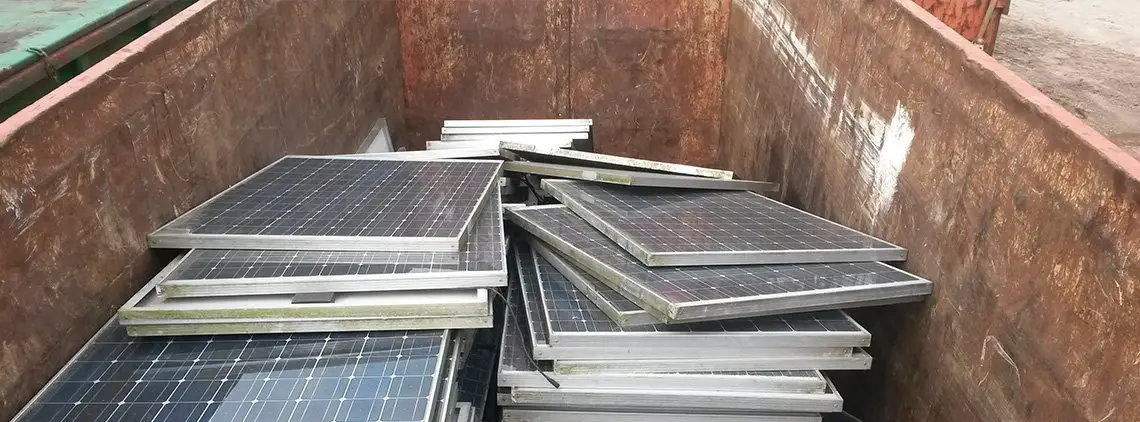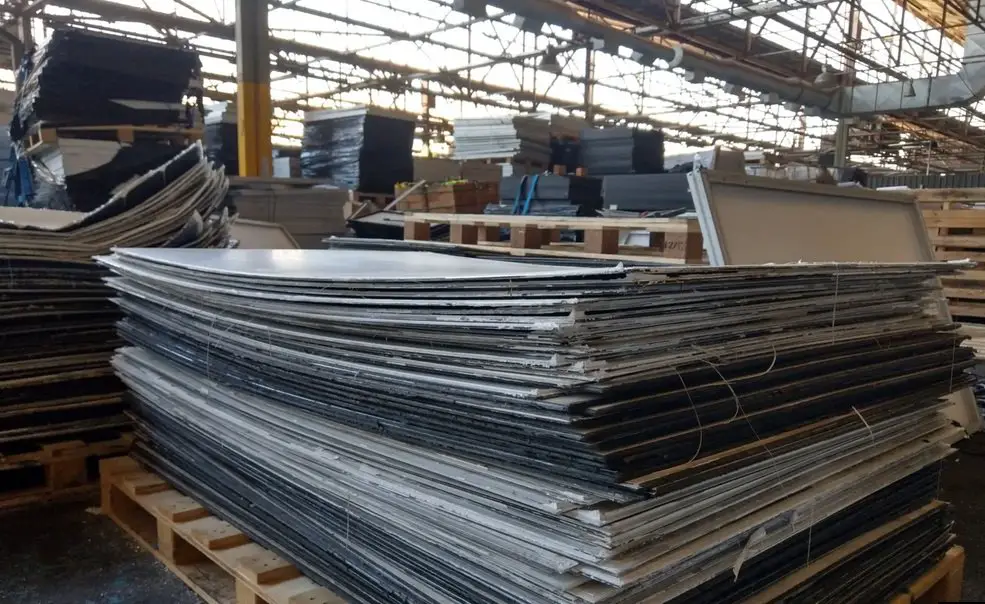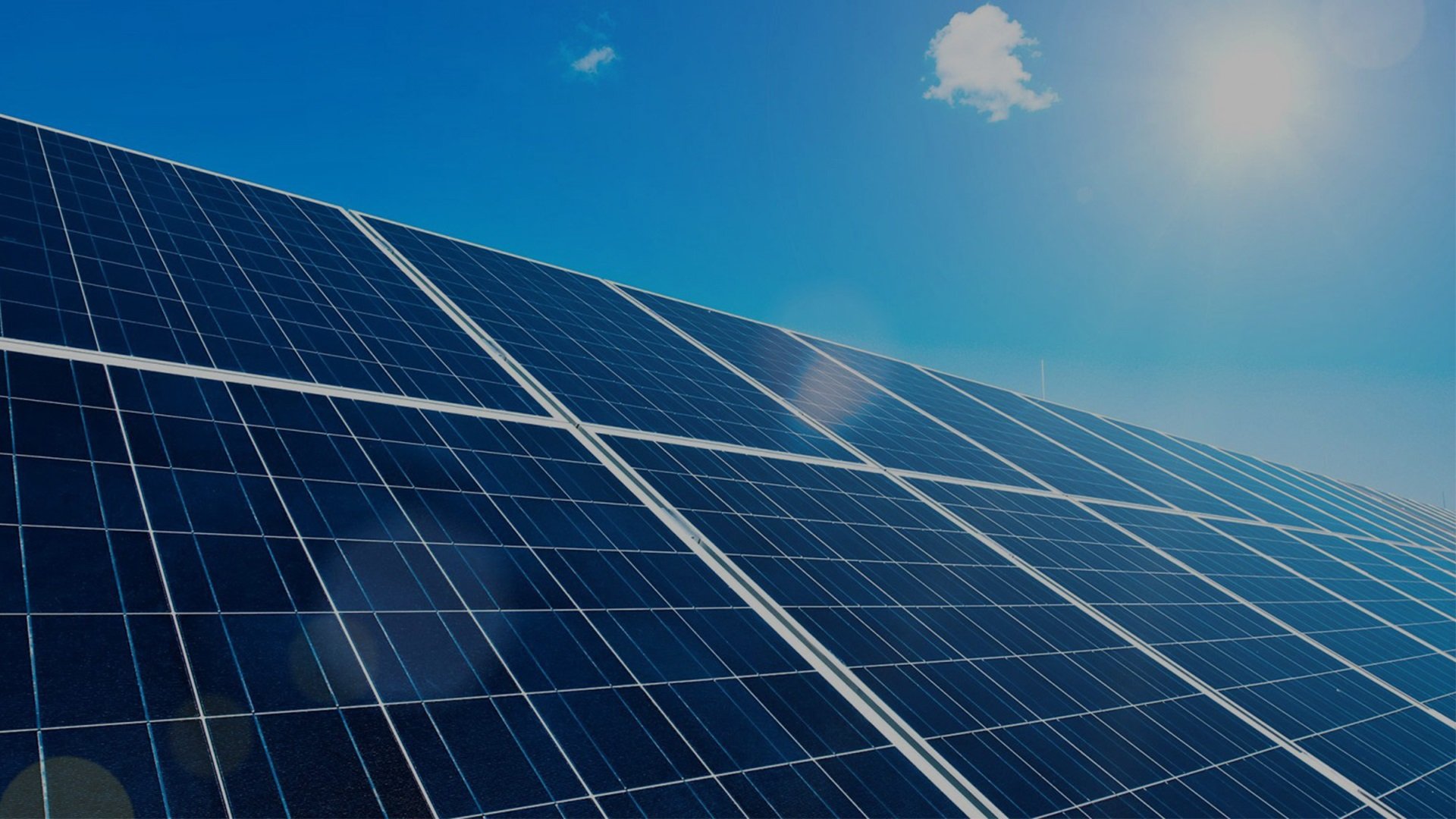Where Will Solar Recycling Go From Here
New research, new regulations, and an ever changing, forward thinking industry will likely see a big uptake in solar part recycling over the next five years.
A recent University of NSW study has put Australia at the forefront of understanding the economic drivers and possibilities ahead. With solar panel life cycles coming to an end, recycling PV is an industry set to expand at a rapid pace.
What Are Solar Panels Made Of
One of the most important components of a solar panel is silicon. After oxygen, silicon is the second biggest element in our planets crust. There are three main approaches to making silicon into panels. Monocrystalline solar panels are the most efficient and expensive. Manufacturers cut individual wafers from a large silicon block and then affix the wafers to panels. This labor-intensive process produces the sleekest-looking, premium solar panels.
But the cells alone cant deliver electricity. Power generation requires wiring and metal casing. Standard solar panels also include a glass casing on the panels front for protection against damage and temperature increases, which decrease efficiency.
Sell The Used Solar Panels
If youre looking to make a quick return from your old solar panels, and they are still operating at some capacity, it may be worth selling them as a used product via Gumtree or selling them to friends. Not only will you be able to earn a small profit, but it will also prevent the system from seeing landfills for another few years and allows someone else the opportunity to access and generate a renewable power source.
Read Also: How To Save Solar Energy
What Happens To Old Solar Panels
Right now, not much. There are two main reasons solar panel recycling is tough to do at the moment.
1. Hardly anyone does it
There arent many places equipped to handle them. As with any tech-related product, its not simply a matter of throwing them in a bin like a can of soda or a milk jug. Solar panels are highly technical products with electrical wiring, glass, and a variety of metals.
So, your biggest obstacle to recycling your old solar panels is finding a place that will take them.
2. Not cost-effective
As with any complex product, some parts of the panels are worth more to recyclers than others. The main components of solar panels are glass, aluminum, and metals like silicon, silver, and tin, perhaps some copper.
The aluminum has value. The silver has value. And in larger quantities, so might the glass and tin. But thats the problem the quantities are too small.
Does It Pay For Itself

If recycling saves a great deal of energy then it is likely to:
Generally speaking, traditional methods of recycling that have been around for a long time because they make money, such as reusing scrap metal, are a net environmental benefit. Recycling that requires a financial or legal incentive may not save enough energy to be environmentally worthwhile. Any time recycling requires more energy than extracting and refining more raw materials its likely to be a net environmental minus.
This is just a rule of thumb and each case needs to be considered on its merits. But if recycling doesnt pay for itself its not a good sign.
You May Like: What Are Solar Panels And How Do They Work
Howare Thin Film Solar Panels Recycled
Like those made from silicon, thin-film solar panels arerecyclable. The percentage of materials that can be reused from thin-film solarpanels is as follows:
- 89%glass
- 4%plastic
- 1%metal
You may have noticed that there are fewer materials from thin-filmsolar panels that are recycled, but by nature, thin-film solar panels have lessto them as they are smaller and lighter.
Basically, the different components are separated via mechanicaland chemical means, and each gathered together to be remade into new products.
Are Solar Panels Recyclable
The short answer is yes, they are. Solar panels are typically made of a combination of glass, aluminum, and plastic. While glass and aluminum have proven to be highly recyclable, plastic is much less frequently recycled and less valuable. That said, the problem here lies in the separation of the mixed materials. According to CED Greentech, the process of extracting each of these materials can be tedious. It also might require advanced machinery and special expertise.
You May Like: How To Hook Up Solar Panels To Your Home
Solar Panel Recycling Times
An average solar panel operates efficiently for nearly 30 years. Beyond this point, performance issues usually develop. When panels are old, you shouldnt toss them in the trash because the hardware wont break down in a landfill. Instead, you must implement procedures to prepare the waste for recycling. Although a solar panel system has multiple parts, only a few components can be completely recycled.
Solar Panel Recycling Process
Our Solar Team at Retrofit Environmental collects and transports discarded solar panels to a processing facility. We partner with an ISO 14001 and SEIA approved solar module recycler with no-landfill processing.
Evaluate
Solar modules are evaluated and marked for recycling as needed. Modules are grouped by size and type to simplify the next step in the recycling process.
Prepare
Connection wires, junction boxes and additional components are removed from the solar panel. The module frame is removed using a machine developed for this process.
Shred
With the frame and j-box removed from the solar panel, the remaining laminate is shredded. This step makes the materials easier to handle, leaving pieces about the size of your hand.
Grind
The shredded laminate goes through a grinding process. This further reduces the size of the material. Wire and cell material are separated from the glass and encapsulant.
After the first grind, the material is mechanically sorted by size and some of it is ground again to achieve uniform granules. Encapsulant and polymer backsheet material is lighter than glass, allowing for mechanical separation.
Also Check: How Much Does It Cost To Install Solar Attic Fan
The Other Side Of Green Energy
When people think of renewable power, they think clean, natural, sunlight, wind, and water. Were simply utilizing the massive amounts of energy found in nature in seemingly infinite quantities. The other side of the equation is that it takes technology to harness that power. Sunlight by itself doesnt give us electricity. We need to build systems that take the sunlight and convert it into something we can use. While the availability of sunlight may be infinite, any of the systems manufactured by humans to support the distribution of solar power are not.
Solar panels, batteries, and other electronics have finite lifespans. Once theyve reached their end of life, many companies are tempted to simply throw them away in landfills. However, doing so is detrimental to the environment, wasteful of valuable resources, and often may defeat the purpose of choosing renewable energy sources in the first place. In addition, there may be large fines incurred for violating recycling regulations.
Solar Panel Recycling Infographic
Heres a look at the current state of solar panel recycling, and a little about the future:
This infographic was produced in 2017 by GreenMatch, a UK-based provider of quotes for green energy products from multiple providers.
Manufacturers that recycle their own solar panels
Following the EU regulations, some solar companies across the world, including First Solar and SolarWorld, began their own reclamation programs in order to streamline the process as waste increases into the future.
First Solar has its own proprietary process for reclaiming its cadmium telluride thin film solar panels, which results in 95% of the semiconductor material and 90% of the glass available for reuse, either in new solar panels or other products. The company makes the recycling service available to its customers as part of its sales and service process. Recycling costs extra, unfortunately.
To perform the recycling, First Solar takes panels back from its customers, then puts them through a process that involves shredding, crushing, and treating the panels with a liquid process that helps to separate the component parts. Glass and laminate are separated and reclaimed in one process, and the resulting metal slurry is sent to a third party, who performs a process that results in separate cadmium and tellurium products.
Heres a look at how that works:
Image credit: First Solar
Don’t Miss: What Is The Best Solar Stock To Buy
The Current State Of Solar Panel Recycling
In the U.S., when solar manufacturers take back used solar panels, they can either dispose of or recycle them. Unfortunately, because of the labor-intensive process of recycling panels and the economics of the process, most solar panels in the U.S. end up in landfills.
When solar panels are recycled, it is most often done at glass recycling plants. The specialized glass from the solar panels is blended in with regular glass to be used as insulation. However, there is a lot of focus within the solar industry on optimizing the recycling process, and countries are exploring the possibility of building new recycling plants specific to solar panels.
In 2012, the European Union issued the Waste Electronic and Electrical Equipment directive, which requires the recycling of e-waste like solar panels in order to protect human health and the environment. Because of this regulatory mandate, Europe became the only continent that has recycling centers dedicated to recycling solar panels.
Other countries, including Australia, India, Japan, and South Korea, are currently developing guidance and mandates for solar panel recycling. In the U.S., the question of solar recycling mandates is left to the states currently, Washington is the only state with such a mandate.
Give Them To A Scarp Dealer

Possibly the least environmentally friendly way to dispose of your panels is to have them picked up by a scrap merchant. Scrap merchants might even sell themselves as recyclers but given the paucity of actual silicon panel recycling options, it is a good chance they are not going to recycle the whole panel.
As with the electronic waste site, a scrap merchant will strip the panels of all their valuables. From there it is up to the scrap dealer what he does with the leftover panels, but there is a good chance he will leave them to rot in a temporary disposal site. As we said from the outset, this is the best way to dispose of them but depending on your location it might be the only realistic one available.
Don’t Miss: What Do You Need To Set Up Solar Panels
How To Dispose Of Old Inverters
Landfill Is Not Green
In most cases, cables and aluminum frames are removed and the remainder of the module is sent to landfill. Solar module glass can be recovered it accounts for the majority of weight in the solar module but represents a very small portion of the modules value. And since the glass contains metals, its second-use applications are limited. The high-value materials such as silicon, silver and copper, for the most part, are currently not being recycled in the United States.
A new project initiated in late 2019 by Recycle PV Solar and in collaboration with Europe-based PV Cycle, seeks to address these issues. Speaking to pv magazine, CEO and 40-year veteran of the solar industry Sam Vanderhoof said, Ive been part of the problem. Im responsible for deploying millions of solar panels. For my buddies and I, in the early days at Schott and Sharp and Kyocera, our goal was cheap. We didnt think about end-of-life. The premise was we were selling green sustainable energy that lasts forever and doesnt need maintenance.
Also Check: How To Implement Solar Energy At Home
Your Solar Panels Are Broken Now What
There are a few ways your panels can break. The glass can be damaged, or the system could have overloaded due to electrical error. In rare cases, your system can even be fried by a lightning strike.
Solar panels are surprisingly fixable. Contact a nearby solar company to arrange a repair or watch this video below to learn how to do it yourself. You can fix anything from the glass to the connecting wires, so dont throw your expensive panels away before youve tried!
If the panel is broken beyond repair, its time to think about what you can salvage. Some older panels contain a surprising amount of silver that you can retrieve and sell for a profit.
There Is No Solar Waste Crisis
If you look online its easy to find articles declaring were heading for a solar waste crisis and will soon be inundated by tens of thousands, or hundreds of thousands, of tonnes of old solar panels.
The good news is theres no crisis. There is only a trivial solar waste concern. But I can forgive people for thinking theres a serious problem because the numbers involved are pretty big. Griffith University researchers say Australia could have 1.5 million tonnes of solar panel waste from residential installations alone by 2050.
Currently 14 gigawatts of PV have been installed in Australia, which is around one million tonnes of panels. Over the past year a record breaking 3.6 gigawatts was installed. If I assume this installation rate keeps up for the next five years and every solar panel installed before 2025 will have to be scrapped while ones installed after that will still be in use in 2050, then in 40 years time we will have around 2 million tonnes of solar panel waste.10
It may seem that if we dont recycle such a massive amount of waste well end up with a mountain of old solar panels that rivals Uluru, but its not that bad. If we stacked stripped panels one metre high we could fit 2 million tonnes in under one square kilometre. This means we could fit all of Australias solar panel waste up to 2050 inside a few parks just south of Adelaides CBD.
Read Also: What Is Solar Pv System
Future Panel Disposal May Be Prefunded
When I researched this article I discovered Australia has a National Television and Computer Recycling Scheme. There is a fee that is built into the purchase price of TVs and computers that pays for their disposal. If you take them to one of these locations you can get rid of them for free.4 Here is a list of computer hardware they will accept.
In the future there may be a similar scheme that will cover the disposal of solar panels. But, because theyre beneficial to the environment and the least toxic form of electronic waste I know of, they are probably the last electronic product we should put a fee on to pay for their disposal. But I still think we should get around to doing it at some point.
Thecost Of The Wrongful Disposal Of Solar Panels
In November 2018, Japanâs Environmental Ministrywarned that the number of solar panels that will become waste every year wouldrise from 10k to 800k by 2040. The problem? Japan has no plans in place tosafely dispose of the panels people will be throwing away as they wear out.
The problem is larger than just the sheer number ofpanels that will be filling up our landfills. Solar panels create three-hundredtimes more toxic waste per unit of energy than nuclear power plants, astartling revelation.
Not only is the world faced with toxic waste enteringour water supply from the wrongful disposal of solar panels, but countries likeChina, India, and Ghana with communities that live near waste dumps whereelectronics are salvaged for their valuable copper wiring burn the devices toget to the wiring. Burning releases fumes from the plastics resulting in smokethat contains toxic fumes known to be carcinogens and to cause birth defectswhen breathed in.
You May Like: How Much Do Solar Panels Cost In Canada
What Solar Panels Are Made Of
The vast majority of solar panels that have been sold are made with crystalline silicon solar cells. These c-Si solar panels are what you might think of when you think of solar. The layers include a frame made from aluminum, low-iron glass that covers the whole panel, crystalline-silicon solar cells sandwiched between two layers of EVA encapsulant , and a backsheet made of polyvinyl fluoride that provides extra protection from moisture, UV light, and temperature fluctuations.
Heres an image that shows the layers that go into a typical c-Si panel is made:
Image credit: DuPont
The layers are fairly simple, and when combined together using heat to seal the encapsulant and bond it to the glass, form a very sturdy panel built to last.
Howis Silicon Solar Panels Recycled

Silicon solar panels contain a number of materials that are highlyrecyclable. Each material equals a percentage of the panel including:
- 76%glass
- 8%aluminum
- 1%metal
There are also copper components that have become popular materialdue to its price when sold on the open market and 5% silicon, which cannot berecycled.
Because of the prohibitive cost of separating the components,there are currently only two options for recycling solar panels. Solar panelscan be recycled at general-purpose glass recycling facilities or at one of thenew recycling facilities that are popping up that specialize in recycling solarpanel components.
After recycling silicon solar panels 100% of the metal, 85% of the silicon modules are given new lives in other products or to make other solar panels.
Read Also: What Is The Average Cost Of A Home Solar System
